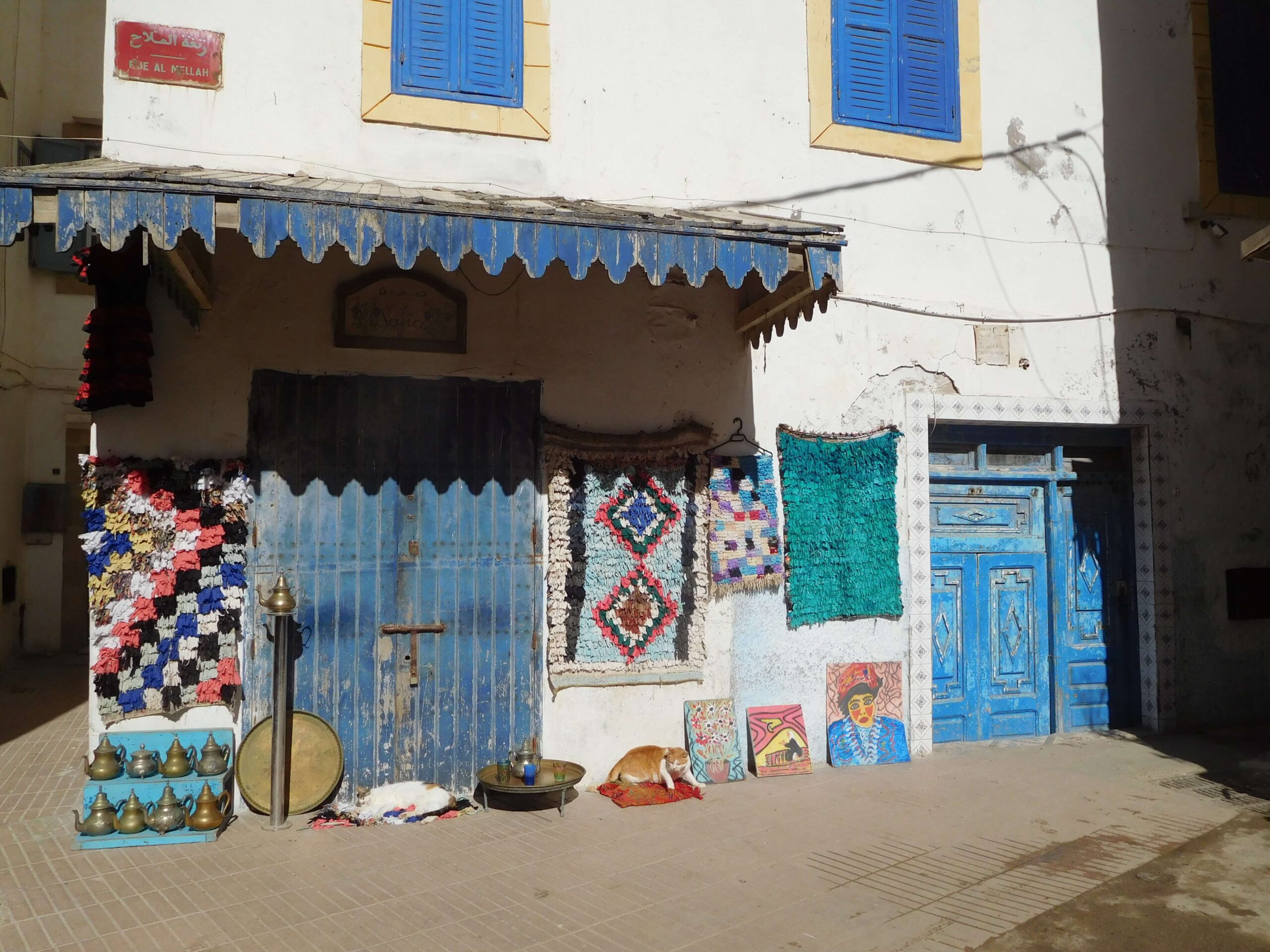A City Built to Breathe, Reflect, and Protect Essaouira’s beauty isn’t loud.
It’s tucked behind wooden doors, reflected in tiled courtyards, and carved into the curves of alleyways where wind and light dance quietly.
Walk long enough through the medina and you begin to notice it: a rhythm, a repetition, a philosophy.
Essaouira was not built in a rush. It was composed—like music—layer by layer, stone by stone, arch by arch.
In this blog, we open the doors—not literally, but thoughtfully—and explore the quiet brilliance of Essaouira’s architecture.
Why So Many Blue Doors?
Essaouira is often called the city of blue.
Its doors, shutters, boats, and sometimes entire façades are washed in a palette of indigo, turquoise, and sea-worn sky blue.
But why blue?
Tradition & Belief: de In Moroccan culture, blue is believed to ward off evil spirits and bad energy. It’s a color of protection.
Reflection of the Sea & Sky: In a coastal city where the Atlantic frames every breath, the use of blue blurs the line between manmade and natural.
Temperature Control: Lighter colors help reflect sunlight and keep interiors cool.
And perhaps most importantly, blue calms.
In a city shaped by wind, movement, and music, the color becomes an anchor. A pause.
Walls That Protect, Not Just Enclose
Essaouira is a fortified city, originally designed by European military architects in the 18th century for Sultan Sidi Mohammed ben Abdallah.
Its walls serve two purposes:
Defense: The Skala ramparts and bastions once protected the port and medina from invaders and pirates.
Climate: Thick stone walls regulate temperature year-round, keeping interiors cool in summer and warm in winter.
But there’s also a philosophical element.
The walls invite you inward. Essaouira doesn’t perform on the outside—it reveals its beauty in private, quiet layers. Like a well-written story.
The Riad: Architecture for the Soul
At the heart of Essaouira’s medina lies the riad — a traditional Moroccan home with an internal courtyard.
From the outside, it may look plain. But cross the threshold and you’ll find:
- A central fountain, often tiled in geometric patterns
- Arches framing open sky
- Cool shadows that shift with time
- Rooms arranged not for display, but for flow and privacy
- The architecture reflects a value system: inner life over outer appearance.
- A riad isn’t built to impress passersby. It’s built to give peace to those who live there.
In a fast, surface-driven world, that’s a radical idea.
The Details: Geometry, Repetition, Meaning
Moroccan architecture is rich with zellige (mosaic tilework), muqarnas (ornamental vaulting), and carved cedarwood.
These aren’t just decoration—they’re meditation.
- Repetition in tiles and arches creates rhythm and harmony
- Geometry symbolizes unity, balance, and the infinite
- Calligraphy & symbols hint at spiritual teachings and ancient wisdom
- In a city like Essaouira, these details don’t demand your attention.
- They wait patiently for you to notice them.
Influences Written in Stone
Essaouira is a crossroads. Its architecture carries traces of:
- Berber simplicity — functional forms and natural materials
- Andalusian grace — inner gardens, horseshoe arches, tile art
- Portuguese and French military design — bastions, cannons, straight-edged layouts near the port
- Islamic spatial philosophy — layered privacy, inward focus, sacred geometry
- Each influence arrived by sea, and each left something behind.
Essaouira didn’t resist these layers—it embraced them.
That’s part of what makes it feel timeless.
Space to Breathe
More than anything, Essaouira’s architecture gives space.
Space for wind to pass, for silence to settle, for light to fall in strange and beautiful ways.
In the end, it’s not just about what you see.
It’s about what you feel walking through those narrow alleys and shaded patios:
- A pause in time
- A slowing of thought
- A reminder that beauty doesn’t need to shout
- 🗝 Final Reflection: The Door Is an Invitation
- When you walk through Essaouira, you’re walking through ideas made physical:
Protection without fear
Beauty without ego
Community without chaos
Design that serves both form and soul
So next time you pass a blue door, pause.
It may not open—but what it represents already has.
